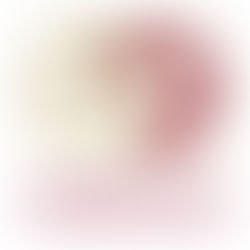Large Figure 1: Post-bisque decorating
So, this is what my first large figure looks like once it came out of the bisque firing. Phew, was I relieved to see that there were no cracks!


What I didn't expect was to see a clear distinction between the areas that had the shellac resist and not. Will this disappear during subsequent firings or not? My guess, they will be visible as the unshellacked part has a thin layer of white slip. Next time I either have to much more careful how I wipe off the the areas within the resist area or extend the shellac areas to protect the whole piece. This time, I will take it as an additional, if unexpected, challenge to incorporate it into my next decorating stage.
I have chosen to use three colours of the Mayco design liners to do the decoration: light blue, white and black. I really enjoy responding to the existing basic decorations while also taking into account the overall shape of the piece.

Because the drips made from contrasting black slip are fairly random every piece I make will be a different challenge. Here I have decided to add a white line to some of the drips to make them seem more purposeful and tie them into the overall decorative scheme. This will also add some raised texture. I want these pieces not just to look good but to be touched.
At this stage I like to play with foreground and background by changing the colour of an overlying pattern decoration from black to white and vice versa in direct response to the underlying background, i.e. a black detail on a light background becomes a white detail on a black slipped background. This adds extra visual interest.
Overall my inspiration for the patterning for this piece comes from my research into Pueblo pots. However, I only use them as a starting off point to develop my own repertoire of pattern elements and make sure that they keep within a style and that, if I introduce a new pattern element, patterns will be repeated or echoed somewhere else on the piece to ensure a sense of cohesion.

On a quiet day in the studio I can spread out and work on more than one piece at once. This is particularly helpful if, like here, I'm not only working on pieces at different stages (i.e. decorating bisque ware - left and finishing off fairly wet greenware - right) but also use different clays, which could easily contaminate each other if not kept physically apart.
It has taken me two days to add the decorations. I'm rather pleased with it so far but know that things can still happen and adding a glaze later will change it a lot. I was aware that I also needed to make sure that I left some undecorated areas for the eye to rest on. If I'd decorated the entire surface it would just have been too much. I want to eye to be able to travel along lines.


I took me some time to figure out how to do this side of the piece as there were less splashes, lines and circles to guide me. It is important that this piece looks good from every angle as I don't want it to have a definitive up and down which would determine how it is places. I want to be able to place my figures in more than one way. This particular piece is probably the one with most sense of positioning as it was originally based on a drawing of a creature standing on three legs. During decorating I have consciously tried to make the head less head-like.

Now it goes back into a bisque firing kiln to set the design liner details. Good luck, may the kiln gods be with you.

















